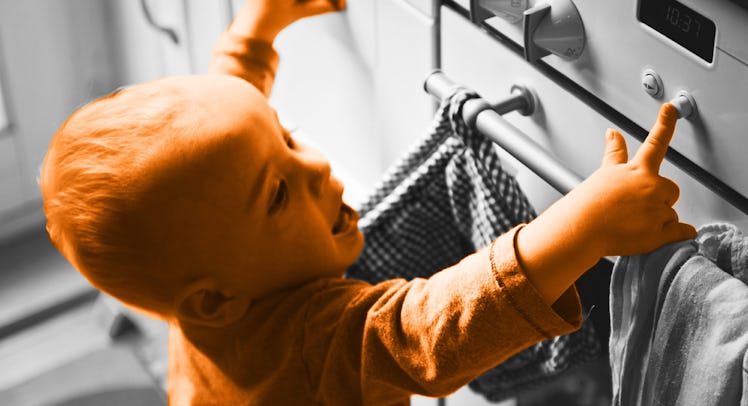How To Help an Infant Develop Gross and Fine Motor Skills
Parents can help a baby to develop fine motor skills and gross motor skills in almost every room of the house, as long as they are patient and focused.

Motor skills begin to develop the minute an infant begins to move. But by about 2-3 months, the development of gross motor skills associated with big movements begins in earnest. Fine motor skills — the use of hands and feet to manipulate the environment and move things around — comes on the heels of gross motor development. And lucky for parents, just going about everyday routines helps an infant develop both sets of skills.
“It’s all about showing a kid what the next step they’re working on looks like,” says Dr. Andy Bernstein, a pediatrician based in Evanston, Illinois. He notes that gross motor skills come first, congruently with the start of regular tummy time. An engaged parent can use this time to help the child move toward movement milestones while making it look like play. “If they’re working on tummy time, give them lots of tummy time, then gently while you’re singing songs show them how to roll. And as you’re teaching them how to roll, you can teach them how to sit by propping them up between your legs and showing toys to them while over time giving them less support.”
As gross motor skills begin advancing, fine motor skills tend to emerge and work in tandem with the broader movement skills. And once fine motor skills come into play, they can be promoted in all areas of a baby’s environment. Pretty much every room in a typical home presents an activity where a baby can work on passing objects between hands, to honing the advanced pincher grasp, which allows them to grab smaller things they otherwise couldn’t with meaty little fists.
Developing Infant Motor Skills in the Kitchen
After babyproofing the majority of the kitchen, parents should leave a few low cabinets accessible to the baby. These cabinets should primarily hold pots, pans and plastic containers that are largely unbreakable. It’s even better if the objects in the cabinets have chunky blunt edges and textures. Parents can let babies explore these items to their heart’s content. Sure, it will be a bit noisy, and probably messy, but those qualities are interesting to a new human. And in manipulating these kitchen tools they learn to grab, turn them around in the hand, and maybe even pull themselves up on cabinet drawers, helping them develop both gross and fine motor skills in tandem.
Developing Infant Motor Skills in the Playroom
A good playroom for developing motor skills should be loaded with thick board books to allow a kid to flip through them, a skill they will then use when transferring objects and manipulating their environments. Simple puzzles, magnetized toys, and other playthings help as well.
But aside from developmentally helpful toys, parents themselves should resist the urge too helpful themselves. It’s important to let a child problem-solve, which helps them work their newfound skills in tandem and move on to the next level.
“If a toy rolls away from them, don’t just grab it. Encourage them to lean over and grab it. Eventually, that turns into crawling,” says Bernstein. He also recommends leaving toys on a table top to encourage a grab-happy baby to use the table edge to pull themselves into a standing position.
Developing Infant Motor Skills at the Dinner Table
Utensils are the endgame. Using a fork or spoon is the gold standard of well-honed motor skills, even if the technique to deliver the food into the mouth remains a bit sloppy. But it all starts with eating with the hands. Even as a child is eating finger food, they’re learning to operate the fingers and hands. This is the perfect time to teach the pincher grasp — the finger and thumb pinch that let’s grandma use a needle on her needlepoint and Spock use the Vulcan death grip.
“Cheerios are a great move for a 9-month-old because they can be working on fine motor skills, like the pincher grasp,” says Bernstein. All it takes is spreading the toasted loops on the table and allowing the baby to start snacking.
Essentially, no matter what room a parent and baby are in, there are ample opportunities. Basically, parents are encouraged to baby-proof the room and let the kid explore. As long as what a kid’s grabbing is safe, they’re manipulating the environment in the service of learning how to be a functional human being. That’s worth a little extra cleanup.
This article was originally published on